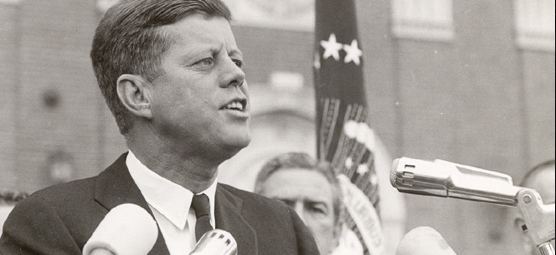Reverberations from JFK assassination still felt today

The murder of President John F. Kennedy on November 22, 1963, in Dallas, Texas, was the single most critical event in American history in the 20th century.
Another assassination, forty-nine years earlier, also involving a member of the body politic and his wife in the back seat of an expensive convertible, triggered the carnage known as “the Great War.” That assassination led to fifty-four million dead — on battlefields, the high seas and in bombed-out civilian areas.
Twenty years later, another “Great War” was necessary to square the results of the first slaughter, and thus another generation was slaughtered.
Kennedy was a man of peace. Having been tempered by war and its attendant physical and emotional pain, he framed Cold War strategies that avoided conflict as well as avoiding the creation of situations in which nations perceived slights or threats. On June 10, 1963, Kennedy pronounced his thesis of peace during a commencement address at the American University in Washington, D.C.
After NOT bailing out the failed CIA invasion of Cuba, after agreeing to neutralize Laos, after avoiding a potential nuclear war over missiles in Cuba, and while fully intending to end the American military presence in Vietnam, Kennedy’s American University address was his death warrant.
In November 1963, Kennedy traveled to Florida and Texas, on quasi-political trips a year before the presidential election of 1964. With a 59 percent approval rating at the time, Kennedy was positioning himself for a better electoral mandate than he had received in 1960 — a crippling fraction-of-a-percent win that limited his legislative initiatives. Excepting white supremacists, Kennedy had a solid political base for 1964, and there was talk of a “Kennedy dynasty” that would feature additional two-term presidencies for Robert and Ted Kennedy that could have carried through all the way to 1984.
But John Kennedy had made enemies in the military, in the intelligence community, in organized crime and among right-wing voters opposed to any civil rights initiatives. As E. Howard Hunt once characterized Kennedy’s appeal, “He was hated by everyone — except the people.”
The bullets — and we are not even sure how many there were — that penetrated Kennedy’s body as his midnight-blue limousine coursed down Elm Street at 12:30 p.m. Central Standard Time — were more than wounds to Kennedy’s body. They were wounds to the body politic, and they undid, in a matter of seconds, all the efforts of the tens of millions of voters who had elected him, and who had continued to vote for candidates who supported his positions on issues. In less time than it would take to enunciate “Ask not what your country can do for you . . .,” the presidency was given over to the leading politician from the state in which Kennedy’s murder had occurred.
As the shots were fired in Dallas, the Senate Rules Committee was interviewing an individual who had bribed the incoming president, Lyndon Johnson, in order to secure a contract. And 800 miles away, in Chicago, the editors of Time-Life were preparing an expose on Johnson’s corrupt business practices that had made him a multimillionaire despite have been a dirt-poor Texas hill boy who served in Congress for $12,000 per year.
With one president pronounced dead, neither the Senate nor Time-Life would expose the newly installed president for what he was.
Lyndon Johnson was saved. The pressure on organized crime would be eased. The intelligence community would be reinvigorated. And peace … well, most simply put, peace would not be allowed to break out. The winding down of Vietnam was turned into an escalation that saw, over the next nine years, more than three million Americans sent there to fight a war that could not be won. What came to be known as the “military-industrial complex” had triumphed over the peaceful vision of John F. Kennedy.
In a few seconds, Camelot was destroyed, and America became the world’s arms dealer and leading war state. When Robert Kennedy tried to affect the change that his brother had been unable to implement, a few seconds of gunfire also destroyed that possibility.
Walt Brown, a former special agent for the U.S. Justice Department and a history teacher at Ramapo College in New Jersey, has spent his life researching the JFK assassination. He has written six books on the subject as well as The Global Index to the JFK Assassination, a CD-ROM of 2,400 pages.
Feedback or questions? Email blog@themobmuseum.org





